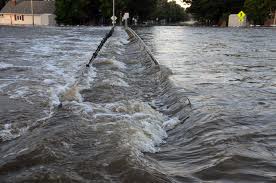Government Grants
Business Grants
Home Owner Programs
Federal Programs
About Us
monitor and evaluate ecological and resiliency parameters on the Mill River in Taunton, Ma; Hurricane Sandy
This is an announcement for issuing a single source financial assistance award to the Massachusetts Department of Fish and Game â¿¿ Division of Ecological Restoration (MADER).
This announcement is for notification purposes only.
The intent of the award is to monitor and evaluate ecological and resiliency parameters on the Mill River in Taunton, Bristol County, Massachusetts after the removal of the Whittenton and West Britannia Dams.
Monitoring will include an assessment of fish migration, assemblage and abundance using video monitoring equipment; an assessment of water quality; and an assessment of channel morphology and river flow.
Flood resiliency and aquatic connectivity will be obtained through the complete removal of the Whittenton and West Britannia Dams and restoration of the river channels upstream of each of the dams to the appropriate width, depth, cross-sectional area and slope.
A restored river channel with the appropriate energy balance of flow capacity and sediment transport will restore fish passage and recreate conditions for the river to effectively move sediment and water at multiple flows while maintaining a stable channel form.
Ecosystem function will be achieved by restoring a naturalized river channel which will allow flows to dissipate flood energy through riffle, pools, channel roughness, and access to floodplains.
The Massachusetts Department of Fish and Game - MADER is the recipient of this award due to their unique qualification to complete the project.
This project is authorized by the Disaster Relief Appropriations Act of 2013, Public Law 113- 2. Project construction for dam removal was previously vetted and approved for funding by the Department of the Interior.
The appropriation for this project is the Hurricane Sandy Disaster Relief Supplemental Appropriation Act of 2013, Public Law 113- 2. Criteria for funding was based on the projectâ¿¿s ability to yield the greatest return on investment by taking advantage of existing science and regional planning tools for resiliency and by working with states, cities, communities, and partners who seek to increase resiliency and the capacity of coastal habitat and infrastructure to withstand and minimize damage from future storms.
This announcement is for notification purposes only.
The intent of the award is to monitor and evaluate ecological and resiliency parameters on the Mill River in Taunton, Bristol County, Massachusetts after the removal of the Whittenton and West Britannia Dams.
Monitoring will include an assessment of fish migration, assemblage and abundance using video monitoring equipment; an assessment of water quality; and an assessment of channel morphology and river flow.
Flood resiliency and aquatic connectivity will be obtained through the complete removal of the Whittenton and West Britannia Dams and restoration of the river channels upstream of each of the dams to the appropriate width, depth, cross-sectional area and slope.
A restored river channel with the appropriate energy balance of flow capacity and sediment transport will restore fish passage and recreate conditions for the river to effectively move sediment and water at multiple flows while maintaining a stable channel form.
Ecosystem function will be achieved by restoring a naturalized river channel which will allow flows to dissipate flood energy through riffle, pools, channel roughness, and access to floodplains.
The Massachusetts Department of Fish and Game - MADER is the recipient of this award due to their unique qualification to complete the project.
This project is authorized by the Disaster Relief Appropriations Act of 2013, Public Law 113- 2. Project construction for dam removal was previously vetted and approved for funding by the Department of the Interior.
The appropriation for this project is the Hurricane Sandy Disaster Relief Supplemental Appropriation Act of 2013, Public Law 113- 2. Criteria for funding was based on the projectâ¿¿s ability to yield the greatest return on investment by taking advantage of existing science and regional planning tools for resiliency and by working with states, cities, communities, and partners who seek to increase resiliency and the capacity of coastal habitat and infrastructure to withstand and minimize damage from future storms.
Obtain Full Opportunity Text:
http://www.grants.gov
Additional Information of Eligibility:
This award will be a continuation of funds intended only for grantees previously awarded under CDC-RFA-GH15-1623 – Award # 1672 Improving Response to and Programming in Humanitarian Emergencies
Full Opportunity Web Address:
Contact:
Agency Email Description:
Agency Email:
arnold_zinan@fws.gov
Date Posted:
2017-04-19
Application Due Date:
2017-06-15
Archive Date:
2017-07-19
Social Entrepreneurship
Spotlight
When it Comes to Social Enterprises, Failure is the Best Platform for Innovation

In the world of social enterprises, failure is a cringe-worthy moment nobody wants to talk about. But, social entrepreneurs can benefit from their failures.

